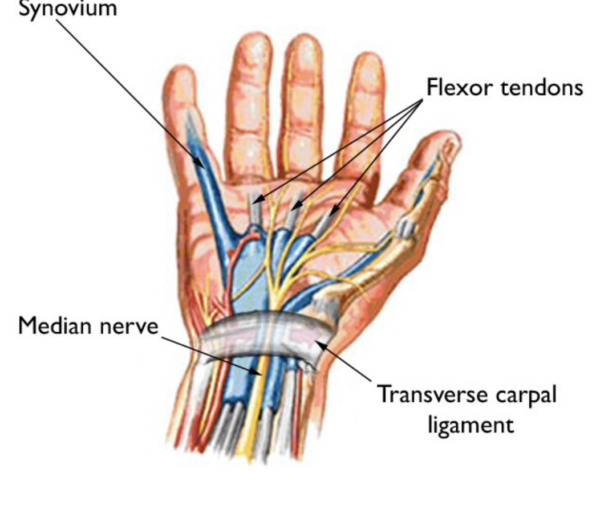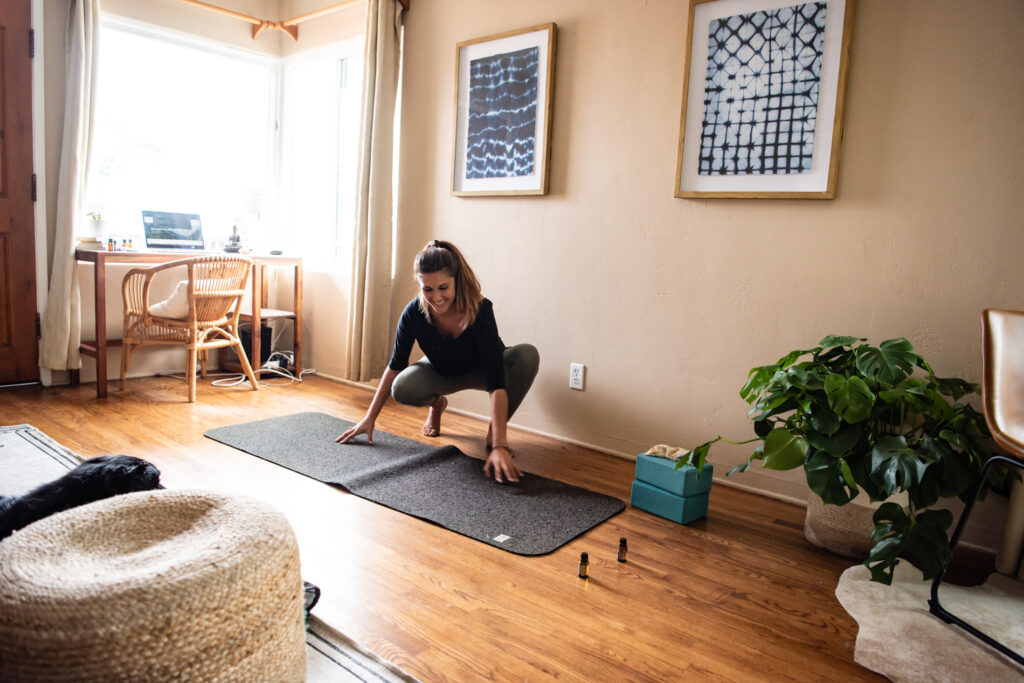According to the Center for Disease Control (CDC) carpal tunnel syndrome (CTS) is an important contributor to work-related disability. In fact, an astonishing eight million people are affected by carpal tunnel syndrome each year. The surgery for CTS is the second most common type of musculoskeletal surgery behind back surgery.
In 2015, surgery for carpal tunnel syndrome was recommended for me after being in pain for months. I finally went to the doctor after having pain, inflammation, and losing mobility and strength in my right hand. In this blog, I’ll share 3 ways that helped me heal from CTS and avoid surgery.
I was working at the front desk of a dental office after just moving to San Diego from Boston. I was waiting on my Dental Hygienist license to go through when the symptoms began. I was devastated and really scared; I wondered what the heck I was going to do….
I vividly remember wondering if I’d be able to practice dental hygiene anymore. I contemplated whether I’d have to go on disability at the age of 25. After doing a lot of research, I found that there are well 230,000 Carpal Tunnel surgeries performed annually, according to the National Institute for Occupational Safety and Health (NIOSH).
Receiving the diagnosis and being handed a referral to a surgeon and a prescription for pain medication, I felt a fire inside of me ignite. In that moment, I decided that I would do everything I could to avoid surgery. I did, and I want to share HOW I did that with you. Let’s dive in.
Adjusting Your Posture and Understanding Your Body

Okay, okay, okay, I had to start out with this one because I think it’s so important and often overlooked when it comes to carpal tunnel syndrome. When I first started getting pain in my hand, I had no idea that both my posture and my ergonomics at work played a role.
Mayo Clinic describes Carpal tunnel syndrome as “caused by pressure on the median nerve. The carpal tunnel is a narrow passageway surrounded by bones and ligaments on the palm side of your hand. When the median nerve is compressed, the symptoms can include numbness, tingling and weakness in the hand and arm”
The anatomy of your hand/wrist, repetitive hand motions, and specific health conditions are commonly known causes for CTS. I want to invite you to explore something else with me: the pathway of the median nerve.
If you follow the median nerve and the extension of the median nerve past your wrist, you will find it’s origination at the brachial plexus. The brachial plexus is a bundle of nerves between the neck, shoulder, and spine on your back. The reason it’s important to note this is because compression anywhere from the brachial plexus to the wrist can cause symptoms of CTS to arise.
When looking at posture and ergonomics, it’s important to look at the hand/wrist, but also the upper back, shoulder and arm. When sitting, you want to align your spine, neck and shoulders appropriately so circulation can flow freely from the brachial plexus. Additionally, you want the same free-flow of blood to move down the arm to the hand and fingers. The more angles you have in your joints, the more blockages can occur.
Sitting with good posture isn’t always easy, here’s a blog post I wrote you can review to help you.. In addition, I’d love to help if you’re interested in optimizing your workspace and tailor it to the needs and health of your body. Send me a message here and we can discuss options to for an Ergonomic Session. I’ve helped dozens of people set up their workspace, and the results on their health are transformative!

Using Yoga to Treat a Carpal Tunnel Syndrome
There are two extremely important pieces to this one: balancing stretching with strengthening. Check out this video above below where I share the reasoning and importance of finding balance between the two.
Yoga therapy can be a really powerful way to heal from CTS naturally. If you’re using yoga as a therapeutic practice, or with a Certified Yoga Therapist like myself, it’s easy to target the practice for your needs specifically. Not all yoga is created equal. There are a lot of yoga classes that may actually add to the discomfort because it’s not intended to be therapeutic for the body.
If you’re looking for therapeutic practices that will help stretch and strengthen these areas to decrease pain and inflammation, I highly recommend Aligned Online. Aligned Online is my monthly yoga therapy membership program. If you sign up and become a member, you’ll find multiple classes on the platform to stretch/release tension and strengthen/build stability. I include multiple trainings for you n creating proper posture and alignment inside AO.
Even better? You can use the discount code “rdh2021” and get your first month of Aligned Online for only $12!!! Here’s the link again–there are no penalties for cancelling if you decide it’s not a fit for you.
Tennis Balls and Self-Massage for the Win!
I know I said this for the other ones, but this one is also SO important. I teach all of my clients how to use tennis balls for massage because it’s such an easy and inexpensive way to free your body from pain. If you’re familiar with using a foam roller, this is technique is similar and can be used as Myofascial Release.
This article describes what Myofascial Release is if you want to learn more. Using the tennis balls in/around the shoulders, upper back and neck helps to promote circulation and blood flow in this area, supporting hand/wrist health. In addition, you can use self-massage to do the same. I highly recommend using self-massage on your hand, wrist, forearm and around your elbow.
In my monthly membership program, Aligned Online, I have multiple trainings that teach you how to do this in depth. The membership also has multiple classes that use tennis balls and self-massage for the hand/wrist.
How to Treat a Carpal Tunnel Syndrome By Becoming Your Own Healer

Our bodies are designed to heal themselves. Even though our bodies weren’t designed to sit for extended periods of time, there are many ways to counteract the negative effects. Healing your body naturally begins by paying attention to your body. There are many tools to promote better posture, release tension, build strength and facilitate optimal healing. I recommend you starting with these ones noted here.
As you can tell, I’m a huge advocate for learning different alternative healing modalities in order to become our own healer. Although there are many instances where surgery is necessary, and in particular surgery for CTS like this one, I strongly believe there are measures we can take to reduce our symptoms and potentially avoid surgery altogether.
If you’re ready to heal your body and see if you can avoid surgery but you need some guidance, please don’t hesitate to reach out. I’ve helped many others heal pain when they thought they’d need to be put under the knife, in addition to my own. You can connect with me here, then we can set up a time to chat and see how I may be able to support you.
I truly hope this blog helps. If you have any questions, or you found this information useful, I’d love to hear about it. Feel free to pass this post along to anyone who may need it as well. Happy Healing!

